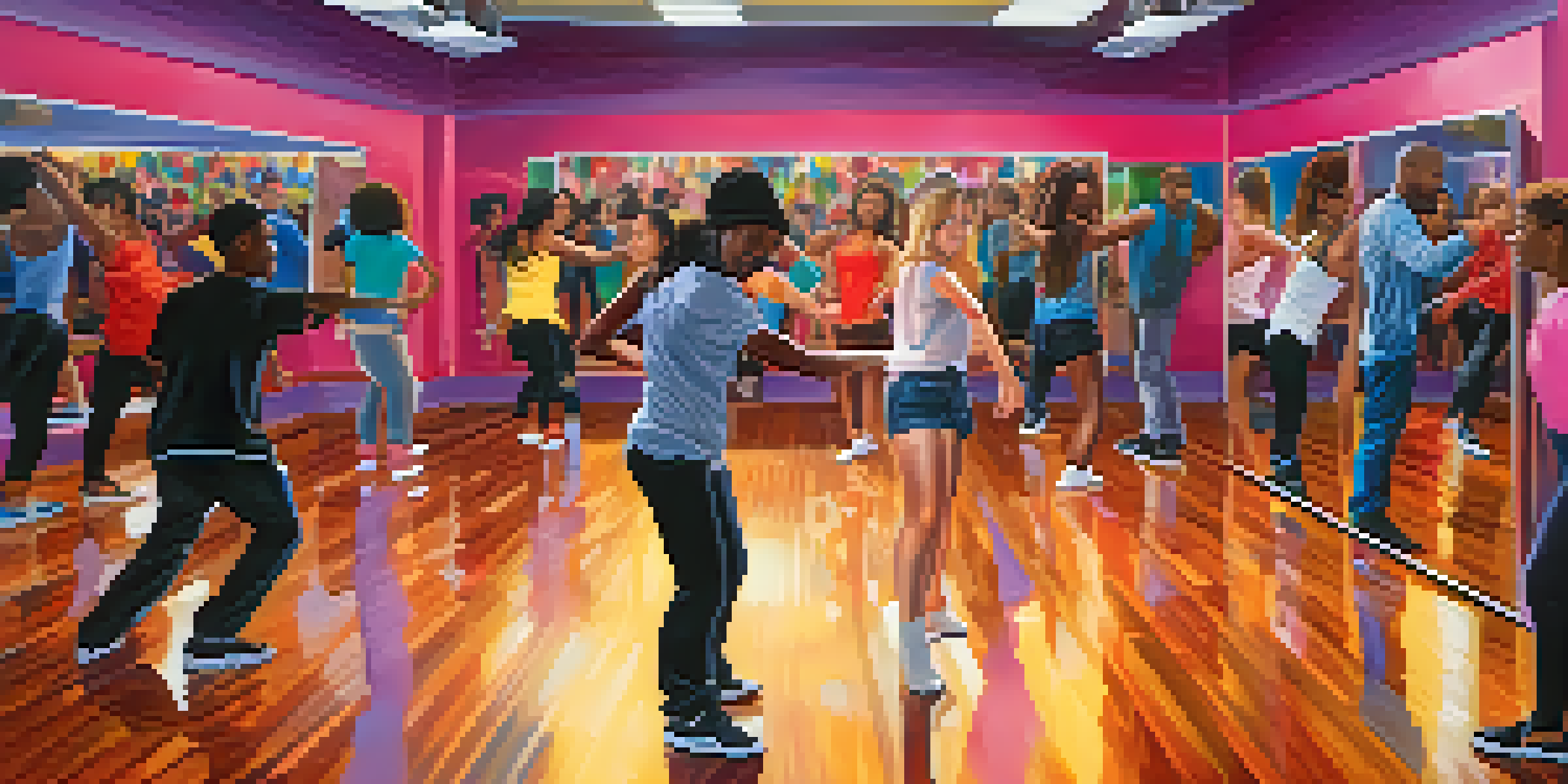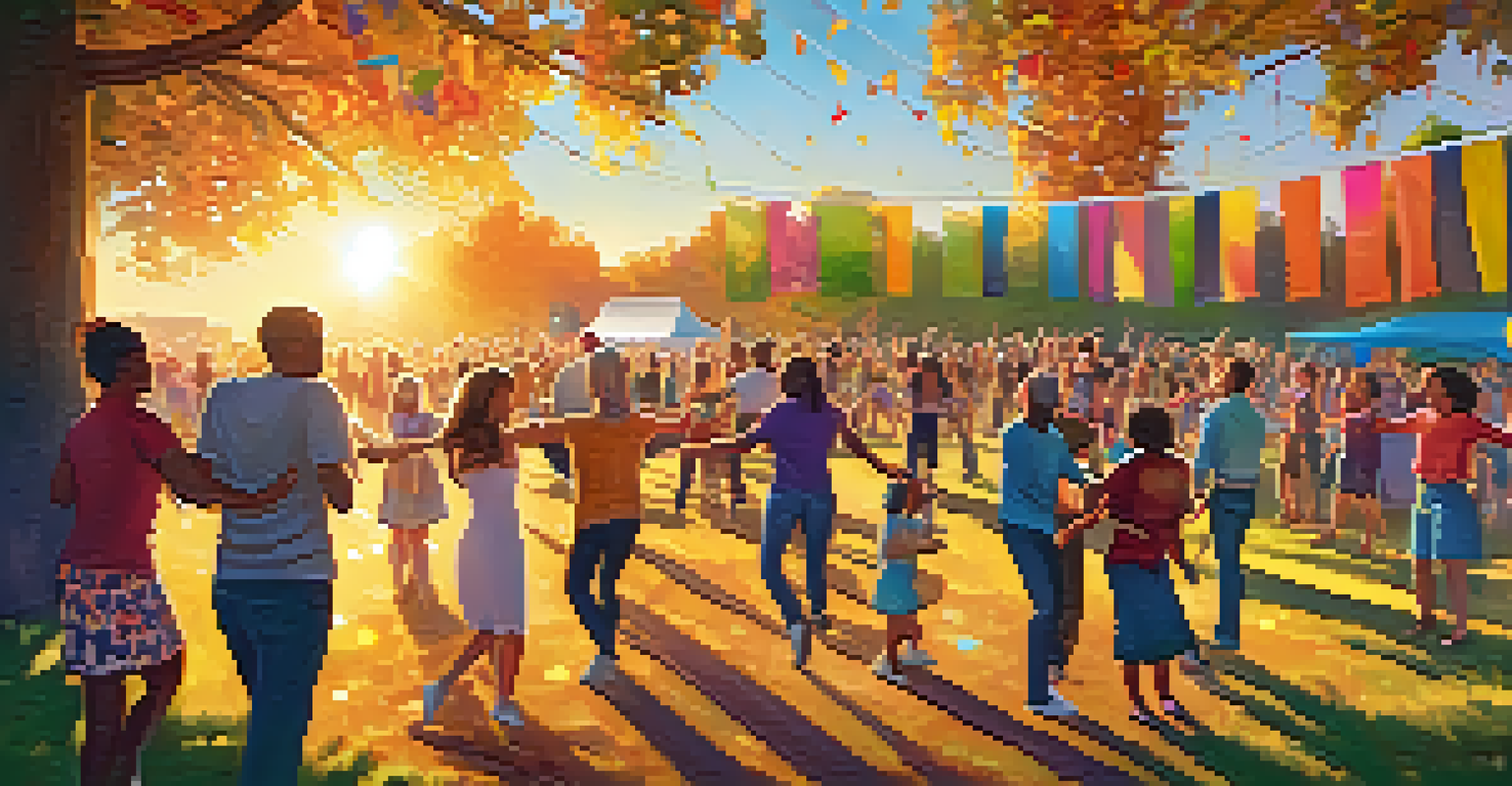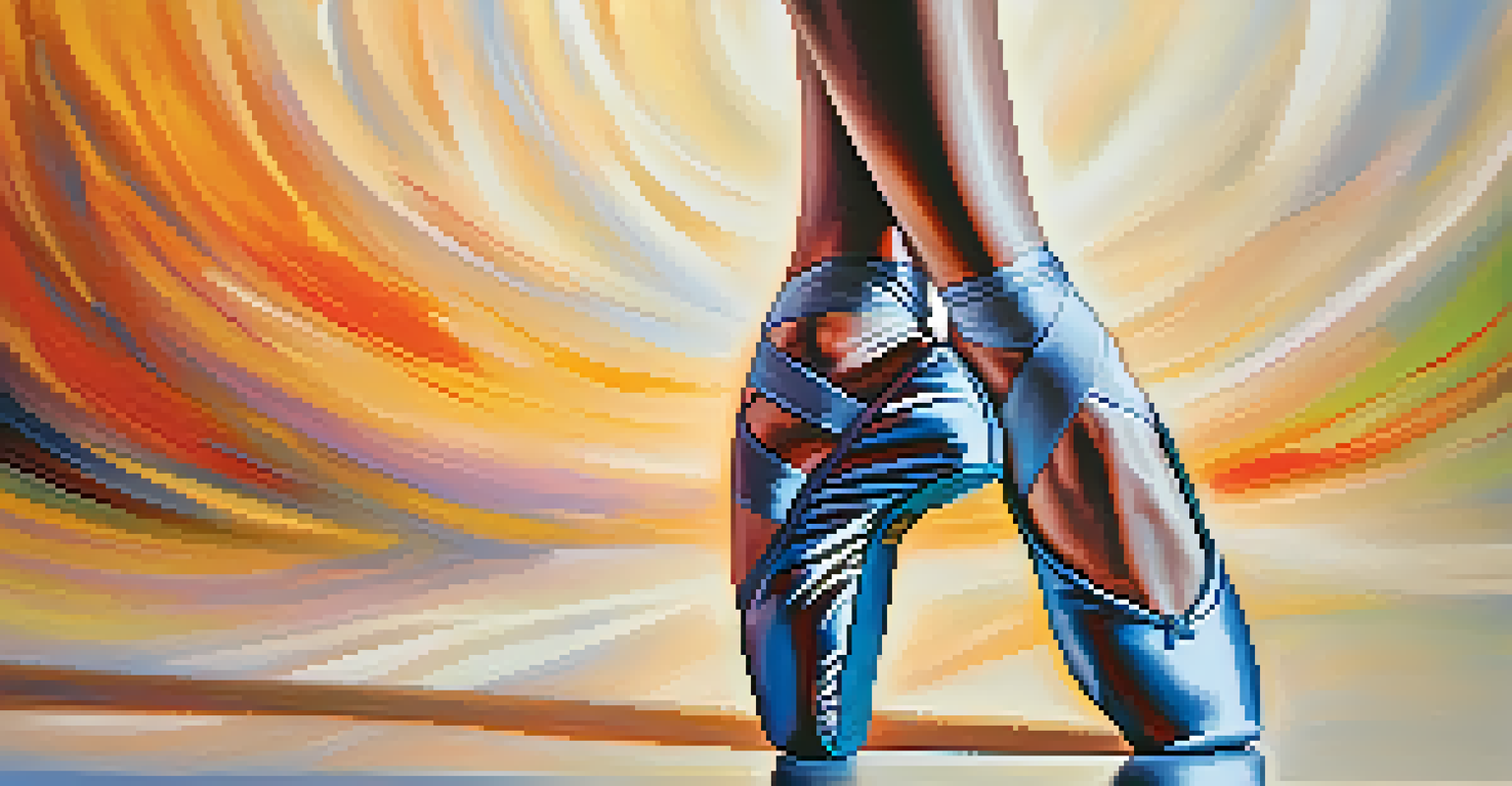Rhythmic Connections: Dance and Neurodiverse Relationships

Understanding Neurodiversity: A Dance of Differences
Neurodiversity refers to the natural variation in the human brain, encompassing conditions like autism, ADHD, and dyslexia. Each individual processes the world differently, which can influence their interactions and relationships. Within this spectrum, dance emerges as a universal language that transcends words and traditional communication barriers.
Diversity is the one true thing we all have in common. Celebrate it every day.
For many neurodiverse individuals, movement can provide a sense of freedom and expression that verbal communication may not always afford. The rhythm and flow of dance allow them to connect with both their emotions and others in a way that feels safe and authentic. This unique form of expression can foster deeper connections, breaking down walls that might exist in more conventional social settings.
By embracing neurodiversity through dance, we can celebrate the diverse ways people interact and form relationships. It highlights the beauty of differences and offers a platform for understanding and acceptance. Just as every dancer has their unique style, every neurodiverse individual brings a distinct perspective to the dance floor of life.
The Therapeutic Benefits of Dance for Neurodiverse Individuals
Dance therapy is increasingly recognized for its positive impact on mental health, especially for neurodiverse individuals. Engaging in movement can help reduce anxiety, improve mood, and enhance self-esteem. The rhythmic nature of dance can create a calming effect, allowing individuals to feel more grounded and centered.

Moreover, dance encourages social interaction in a non-threatening environment. Whether through group classes or informal gatherings, it provides opportunities for neurodiverse individuals to connect with others who share their passion. These shared experiences can lead to lasting friendships and a strong sense of community.
Dance as Expression for Neurodiversity
Dance provides a unique and safe outlet for neurodiverse individuals to express their emotions and connect with others.
Additionally, the physical aspect of dance promotes motor skills and coordination, which are beneficial for overall development. As individuals dance, they engage their bodies and minds simultaneously, fostering a holistic approach to well-being. This integration of physical and emotional health can significantly enhance their quality of life.
Building Connections: Dance as a Community Builder
Dance has a remarkable ability to bring people together, creating bonds that might not develop through traditional means. For neurodiverse individuals, this shared activity can break down social barriers and foster inclusive environments. By participating in dance, they find common ground with others, leading to meaningful connections.
Dance is the hidden language of the soul.
Community dance events, such as dance-offs or workshops, create spaces where everyone is welcome to express themselves. These gatherings often embrace diverse styles and approaches, allowing neurodiverse dancers to shine in their unique ways. This inclusivity promotes a sense of belonging and reinforces the idea that everyone has something valuable to contribute.
Moreover, these connections often extend beyond the dance floor, fostering friendships that enhance social networks. As relationships grow, individuals feel more supported and understood, which can have profound effects on their emotional and mental well-being. Ultimately, dance serves as a catalyst for community building and connection.
Finding Your Rhythm: Dance Styles for Neurodiverse Expression
When it comes to dance, there is no one-size-fits-all approach. Various styles cater to different preferences and needs, making it easier for neurodiverse individuals to find their rhythm. From contemporary and hip-hop to ballroom and folk dance, each style offers unique benefits and opportunities for expression.
For example, contemporary dance often emphasizes fluid movement, allowing dancers to explore their emotions freely. In contrast, hip-hop can provide a more energetic outlet for those who prefer a faster pace. By experimenting with different styles, neurodiverse individuals can discover what resonates with them and enhances their self-expression.
Community Building Through Dance
Participating in dance fosters meaningful connections and inclusivity among neurodiverse individuals, enhancing their sense of belonging.
Additionally, many classes and workshops are designed to be inclusive, accommodating various skill levels and sensory needs. Instructors can adapt their teaching methods to ensure everyone feels comfortable and confident. This flexibility allows neurodiverse dancers to thrive and develop their own unique styles.
Dance as a Tool for Empathy and Understanding
Dance can serve as a powerful tool for fostering empathy and understanding between neurodiverse individuals and their peers. By engaging in movement together, participants can step into each other's shoes, experiencing different perspectives through the art of dance. This shared experience can deepen connections and promote compassion.
Workshops that focus on collaborative dance encourage participants to communicate non-verbally, emphasizing trust and teamwork. As dancers learn to read each other's movements and cues, they develop a heightened awareness of body language and emotional expression. This skill is invaluable, not only on the dance floor but also in daily interactions.
Moreover, these experiences can lead to greater acceptance of neurodiversity within communities. As people witness the beauty and creativity that emerge from diverse dance styles, they become more open to understanding and embracing differences. In essence, dance can bridge gaps and create a more inclusive world.
Personal Stories: Transformative Dance Experiences
Many neurodiverse individuals have shared transformative stories about how dance has positively impacted their lives. For some, dance provided a safe space to explore their identity and emotions without fear of judgment. These personal narratives highlight the profound connection between dance and self-discovery.
One dancer, who once struggled with social anxiety, found solace in a dance group that welcomed her with open arms. Through movement, she began to express herself more freely, gradually building confidence in her interactions with others. Her journey illustrates how dance can empower individuals to embrace their uniqueness and share their stories.
Future of Inclusive Dance Programs
Growing awareness of neurodiversity is leading to more inclusive dance initiatives that cater to diverse needs and celebrate individual expression.
Such stories not only inspire others but also contribute to a growing narrative around the importance of inclusive spaces. When neurodiverse individuals feel accepted and celebrated for who they are, they can flourish in their creativity and connections. Dance becomes more than just movement; it transforms into a pathway for personal growth.
Looking Ahead: The Future of Dance and Neurodiversity
As awareness of neurodiversity continues to grow, the relationship between dance and neurodiverse individuals is becoming increasingly significant. More dance organizations are recognizing the need for inclusive programming that caters to diverse needs. This shift is paving the way for greater accessibility and opportunities in the dance community.
Future initiatives may focus on training instructors to understand and accommodate neurodiverse dancers effectively. By equipping teachers with the tools to create a supportive environment, more individuals can experience the joys of dance. This could lead to innovative dance styles and methods that reflect a richer tapestry of human experience.

Ultimately, the future of dance and neurodiversity holds great promise. As more people embrace this connection, we can look forward to a dance community that is vibrant, inclusive, and diverse. Together, we can continue to celebrate the unique rhythms and expressions that make us who we are.